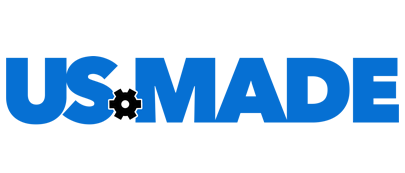Like tens of thousands of manufacturers in North Carolina, Jeff Queen knows how hard it is to run a manufacturing business. His father and son tackle-making operation created an innovative new jig using tungsten that was a big hit with anglers. With their new lure selling at many major sporting goods stores, Queen Tackle was on its way up — until the patent infringement lawsuit arrived.
One thing nearly no manufacturer plans for is to be sued for patent infringement when their invention is unique. More than half of all patent infringement lawsuits filed so far this year have been against American manufacturing companies, up by almost 20% over 2020. Everyday manufacturers are being sued, often by patent trolls, which are shell companies that produce no goods or services and exist only to file patent infringement lawsuits against productive companies. These lawsuits can cost millions of dollars and take five to 10 years to resolve — even if the suits are completely meritless and eventually thrown out by the courts. Jeff Queen was forced to take money from his 401(k) retirement account to pay for his patent lawyers. Ten years ago on Sept. 16, 2021, Congress passed the America Invents Act (AIA) to provide protections for American companies to fight back against these bad patents. A multi-billion-dollar, hedge-fund-fueled cottage industry exists to weaponize them against as many American employers as possible. The hedge funds finance the purchase of bad patents, then give them to patent trolls, who often sue hundreds, or even thousands, of companies at once, alleging patent infringement where no such infringement is taking place. Often the goal is for the manufacturer to pay off the troll to avoid even more costly litigation.
No one should be surprised that some patents are weak, since there are between 600,000 and 650,000 new patent applications every year and only 8,100 patent examiners to review them. The examiners are obligated to grant a patent unless they can find a reason not to. With an average of only 19 hours to review each patent application, it’s inevitable that some patents that should not be granted — patents that are vague, overly-broad or cover something that is already patented — will be. USPTO issues about 300,000 patents every year. Even if a tiny percentage are “bad,” a tiny percentage of 300,000 patents per year is still a big number.
One of the best ways to stop the lawsuit abuse is to improve the quality of patents before they are granted by the USPTO. At a recent U.S. Senate Judiciary Committee hearing, Troy R. Lester, the Chief Intellectual Property Counsel of Acushnet, which manufactures Titleist and FootJoy golf products, testified about the need for more resources and “additional sets of eyes” at key points in the patent application and review process. The quality of patents could also be improved under Section 112 of the Patent Act by applying the same standard used by the patent office to review the validity of patents that have already been granted to patent applications. Why not prevent bad patents from being issued in the first place?
While inter partes review is indispensable, stopping the USPTO from issuing vague, overly broad patents is the best way to protect enterprise and reduce patent litigation abuse. On this 10th anniversary, America’s innovators deserve renewed commitment to the safeguards put in place by the America Invents Act.
Beau Phillips is executive director of US*MADE, a coalition of U.S. manufacturing companies and trade associations who produce their products in America working to curtail abusive patent litigation.
